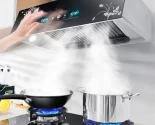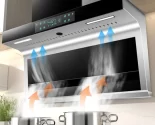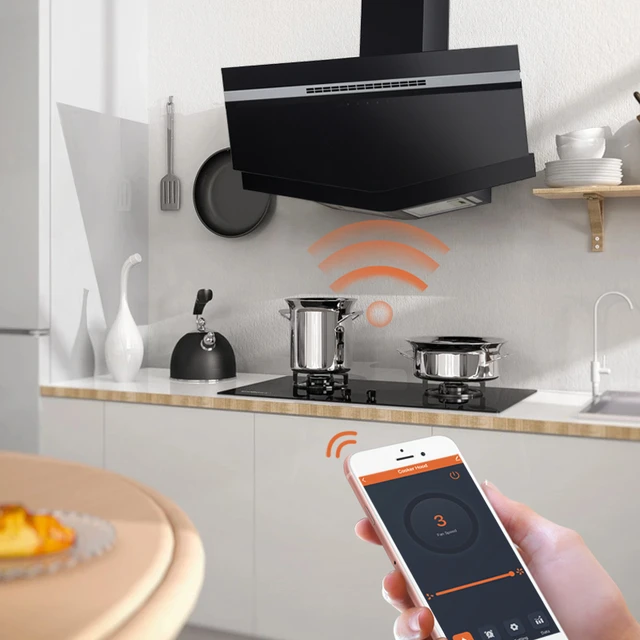
Should range hood go to ceiling?
Introduction
The installation of a range hood is crucial for maintaining a clean and comfortable cooking environment by extracting smoke, odors, and airborne contaminants. One common consideration when installing a range hood is whether it should extend all the way to the ceiling or stop at a certain height. In this guide, we will explore the factors to consider when deciding whether a range hood should go to the ceiling, providing specific information on aesthetics, functionality, and practicality.
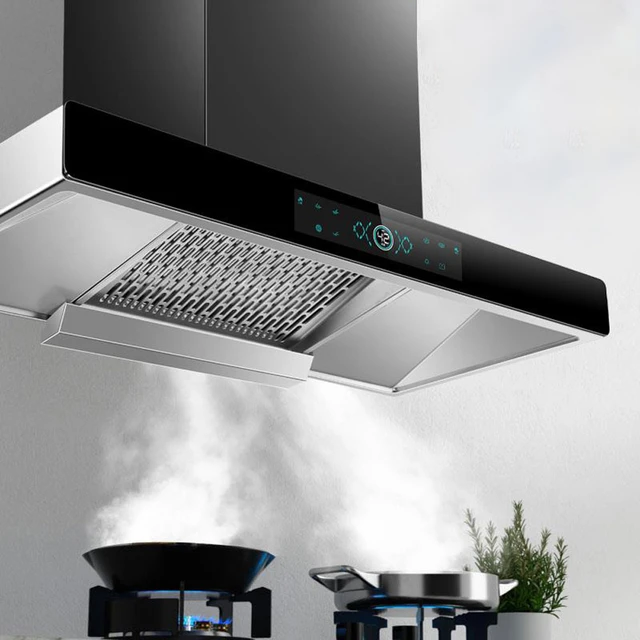
Should range hood go to ceiling?
Aesthetics and Design Considerations
1.1. Seamless Integration
Extending the range hood to the ceiling can create a seamless and integrated look in the kitchen. This design choice can contribute to a cohesive and visually pleasing aesthetic, especially when the range hood aligns with other elements such as cabinetry or backsplash.
1.2. Emphasizing Height
Extending the range hood to the ceiling can help draw attention to the height and architecture of the kitchen. This design choice works well in kitchens with tall ceilings, creating a sense of grandeur and elegance.
1.3. Statement-Making Design
In contemporary or modern kitchen designs, extending the range hood to the ceiling can make a striking visual statement. A sleek, full-height range hood can serve as a focal point and add a dramatic touch to the overall kitchen design.
Ventilation and Functionality
2.1. Maximizing Extraction Efficiency
Extending the range hood to the ceiling can enhance extraction efficiency by capturing smoke, odors, and contaminants effectively from a larger area. The higher the range hood, the more opportunity it has to capture and remove airborne particles generated during cooking.
2.2. Effective Capture of Heat and Steam
Extending the range hood to the ceiling allows for increased capture of heat and steam. This can be especially beneficial when cooking on a high-heat stovetop or using cookware that generates substantial heat or steam, ensuring that these elements are efficiently extracted from the cooking environment.
2.3. Minimizing Obstruction
A full-height range hood that extends to the ceiling can minimize obstruction in the kitchen. It eliminates the need for additional cabinets or shelving above the range, providing unobstructed access and improving visibility during cooking.
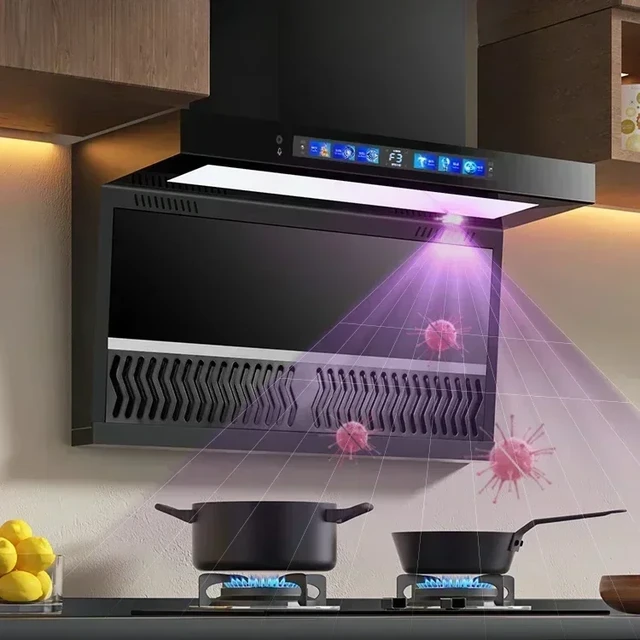
Ceiling Height and Practicality
3.1. Ceiling Height Considerations
Ceiling height is a significant factor to consider when deciding whether a range hood should go to the ceiling. Higher ceilings provide more space for a full-height range hood, ensuring that it maintains optimum extraction efficiency and aesthetics. In kitchens with standard or lower ceilings, extending the range hood to the ceiling may not be practical or visually appealing.
3.2. Headroom and Comfort
When installing a range hood that extends to the ceiling, it is important to consider the headroom and comfort of the cook. Ensure that the range hood is positioned at a height that allows for comfortable movement and easy access to the cooking area.
3.3. Cleaning and Maintenance
A range hood that extends to the ceiling may require additional cleaning and maintenance due to its increased surface area. Consider the practicality of cleaning the range hood and associated challenges in maintaining its cleanliness when deciding whether it should go to the ceiling.
Ductwork Considerations
4.1. Routing Ductwork
Routing ductwork for a range hood that extends to the ceiling may present additional challenges. Depending on the kitchen’s layout and the location of ductwork, it may be necessary to customize or redirect the ductwork to accommodate the height of the range hood.
4.2. Efficiency and Performance
Proper ductwork design and installation are crucial for ensuring optimal ventilation performance. Consult with professionals to assess the feasibility and effectiveness of ductwork routing for a full-height range hood installation, considering factors such as duct size, length, and resistance.
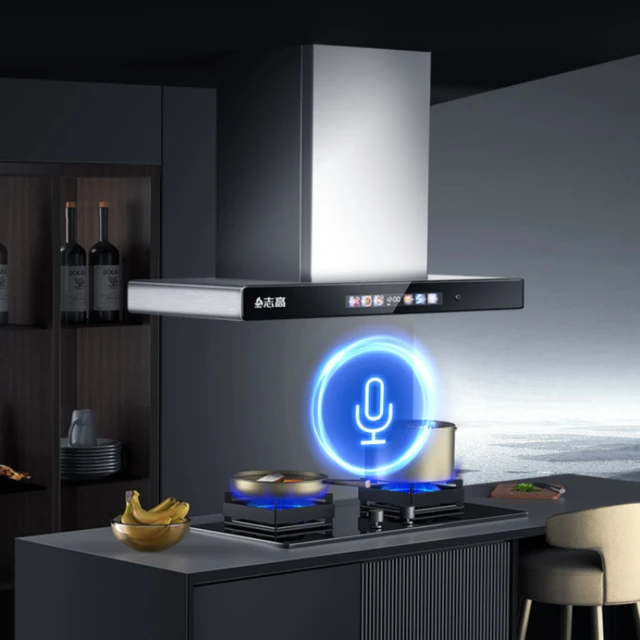
Personal Preferences and Functionality
5.1. Cooking Habits and Frequency
Consider your own cooking habits and frequency to determine the functionality and practicality of a range hood that extends to the ceiling. Individuals who frequently cook or engage in high-heat cooking methods may benefit from the enhanced ventilation capabilities and efficient extraction provided by a full-height range hood.
5.2. Design Cohesion and Personal Style
Ultimately, personal preferences and the desired design aesthetic should guide the decision on whether a range hood should go to the ceiling. Consider whether a full-height range hood aligns with your personal style and complements the overall design theme and elements in the kitchen.
Professional Consultation and Installation
6.1. Seek Professional Advice
When deciding whether a range hood should go to the ceiling, it is recommended to consult with professionals who can offer valuable insights and expertise. Professionals can assess the kitchen’s layout, ceiling height, ventilation requirements, and personal preferences to provide guidance on the most suitable range hood installation.
6.2. Professional Installation
Installing a range hood, especially one that extends to the ceiling, may require professional installation to ensure compliance with building codes, appropriate ductwork routing, and optimal performance. Professionals can provide expert installation services, ensuring that the range hood is functional, safe, and properly integrated into the kitchen design.
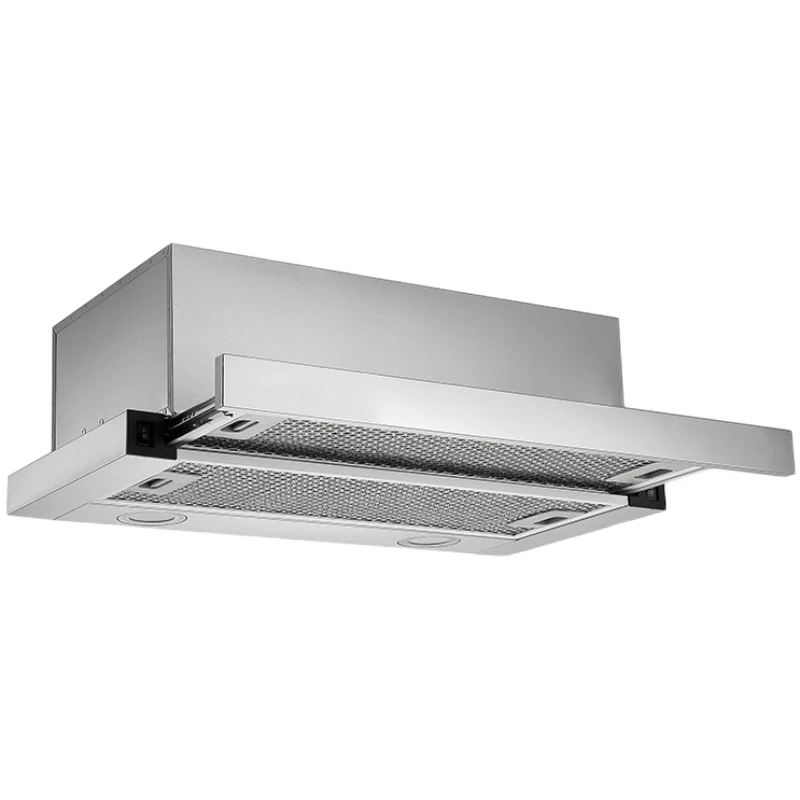
Alternative Options
8.1. Under-Cabinet Range Hoods
If extending the range hood to the ceiling is not feasible or preferred, under-cabinet range hoods provide a practical alternative. These range hoods are installed beneath the cabinets directly above the cooking surface. While they may not offer the same visual impact as a full-height range hood, under-cabinet options effectively extract smoke and odors, providing adequate ventilation for most kitchens.
8.2. Downdraft Range Hoods
Downdraft range hoods offer an alternative ventilation solution that can be installed near or behind the cooking surface. These hoods are designed to retract when not in use, providing a streamlined look. Downdraft hoods are particularly useful when an overhead range hood is not feasible due to space limitations or design preferences.
8.3. Recirculating Range Hoods
Recirculating range hoods are another option if a ducted installation is challenging or not preferred. These hoods utilize filters to trap airborne particles and odors, then release the filtered air back into the kitchen. While recirculating range hoods are not as effective as ducted options, they can still provide some improvement in air quality and ventilation.
Combining Design and Functionality
9.1. Compromises and Solutions
If the decision is made not to extend the range hood to the ceiling, compromises and design solutions can be implemented. For example, adding decorative elements around the range hood, such as a custom-designed hood cover or incorporating decorative tile patterns, can help enhance the aesthetics and visually define the cooking area. Working with a designer can provide creative solutions that balance functionality and design considerations.
9.2. Supplemental Ventilation
In kitchens where there are unique design challenges or limitations, supplemental ventilation solutions can be considered. For instance, adding additional exhaust fans near the cooking surface or integrating an over-the-range microwave with ventilation capabilities can assist in augmenting ventilation and removing contaminants from the cooking area.

Conclusion
Determining whether a range hood should extend to the ceiling involves a combination of factors, including aesthetics, functionality, practicality, and personal preferences. Extending the range hood to the ceiling can create a visually pleasing and cohesive design, enhance ventilation effectiveness, and minimize obstruction in the kitchen. However, considerations such as ceiling height, headroom, cleaning and maintenance, ductwork routing, cooking habits, and personal style should be weighed before making a decision.
Professional consultation and installation services can provide valuable guidance and ensure that the range hood is installed correctly and optimally. By carefully evaluating these considerations and seeking expert advice, you can determine whether a range hood that extends to the ceiling is the ideal choice for your kitchen, creating an efficient, aesthetically pleasing, and functional cooking environment.





